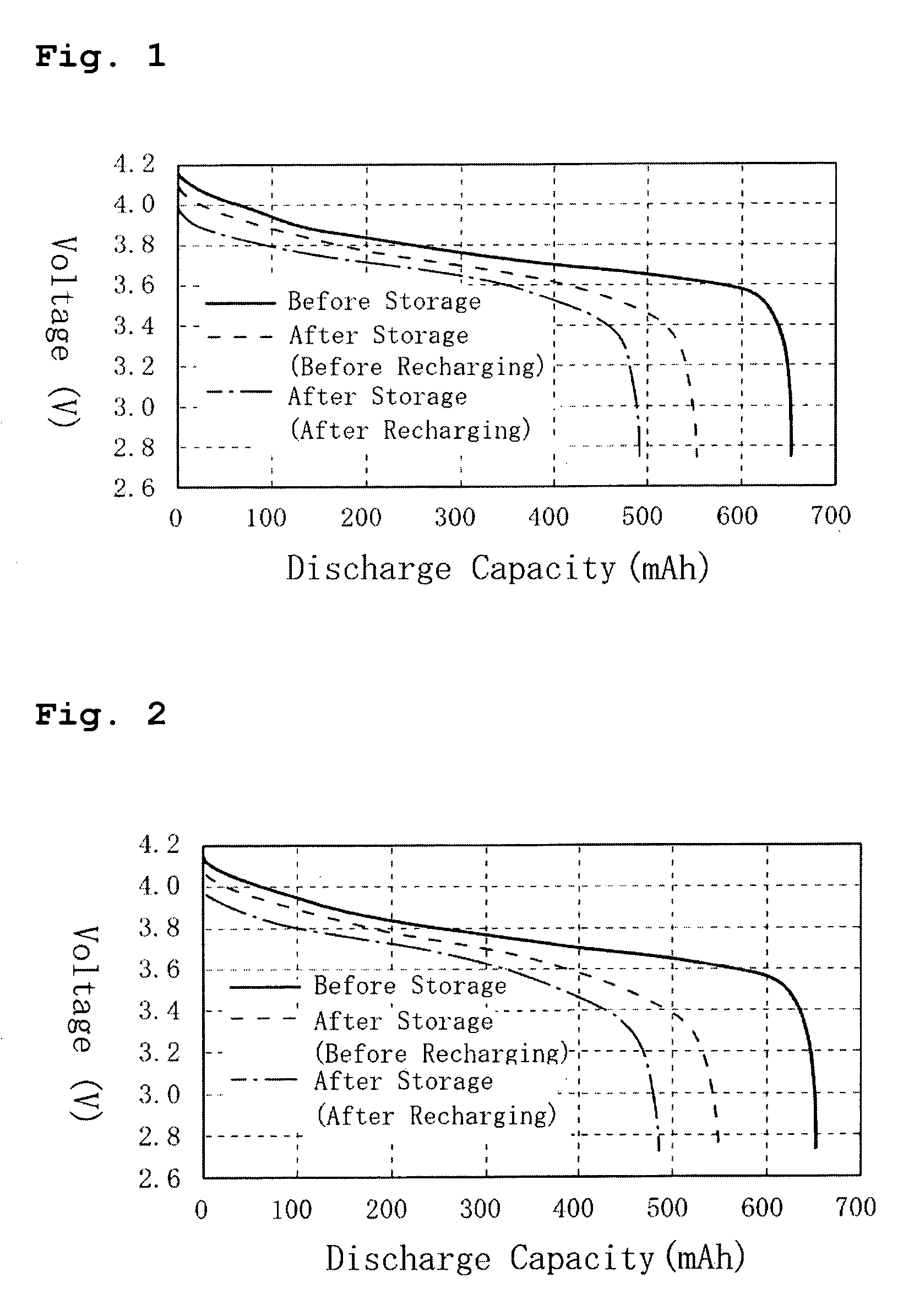Non-aqueous electrolyte battery
- Summary
- Abstract
- Description
- Claims
- Application Information
AI Technical Summary
Benefits of technology
Problems solved by technology
Method used
Image
Examples
first embodiment
EXAMPLE A
[0045] A battery fabricated according to the above-described manner was used for Example A.
[0046] The battery thus fabricated is hereinafter referred to as Battery A of the invention.
second embodiment
EXAMPLE B
[0067] A battery was fabricated in the same manner as in Example A in the first embodiment, except that in place of LMO, lithium nickel oxide (LiNi0.8Co0.2O2, hereinafter also abbreviated as LNO) was used as the positive electrode active material in the first positive electrode active material layer and that the mass ratio of the positive electrode active materials in the positive electrode was LCO:LNO=70:30.
[0068] The battery thus fabricated is hereinafter referred to as Battery B of the invention.
PUM
 Login to View More
Login to View More Abstract
Description
Claims
Application Information
 Login to View More
Login to View More - R&D
- Intellectual Property
- Life Sciences
- Materials
- Tech Scout
- Unparalleled Data Quality
- Higher Quality Content
- 60% Fewer Hallucinations
Browse by: Latest US Patents, China's latest patents, Technical Efficacy Thesaurus, Application Domain, Technology Topic, Popular Technical Reports.
© 2025 PatSnap. All rights reserved.Legal|Privacy policy|Modern Slavery Act Transparency Statement|Sitemap|About US| Contact US: help@patsnap.com



